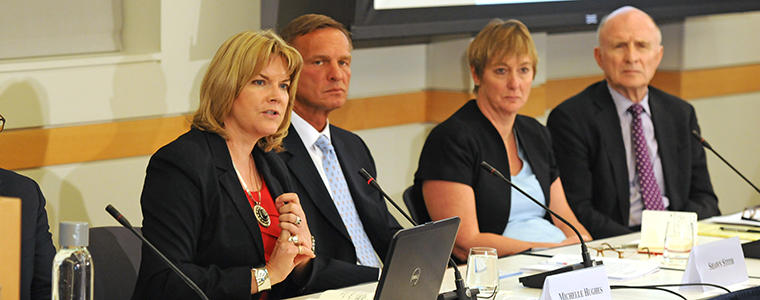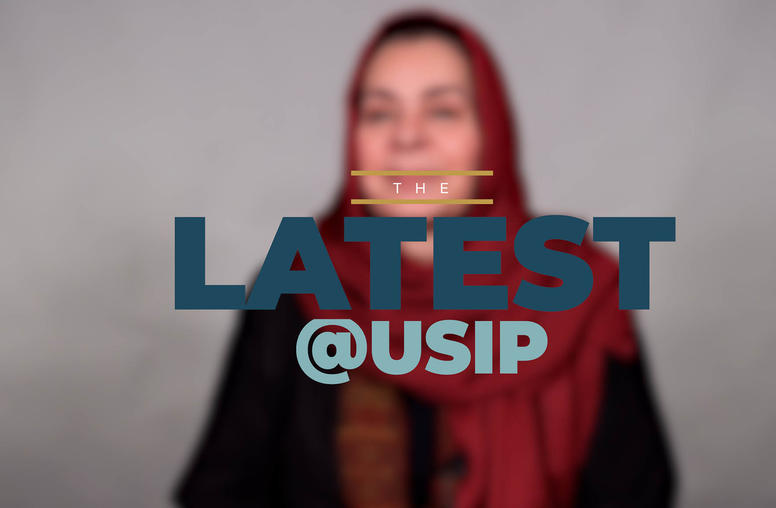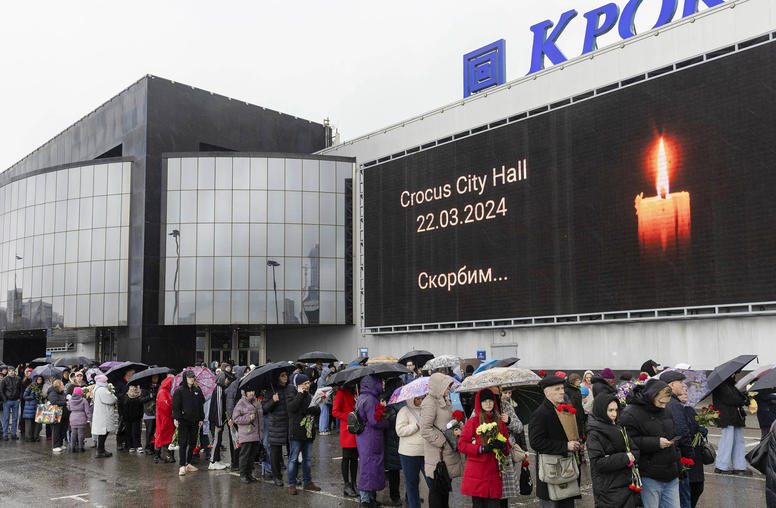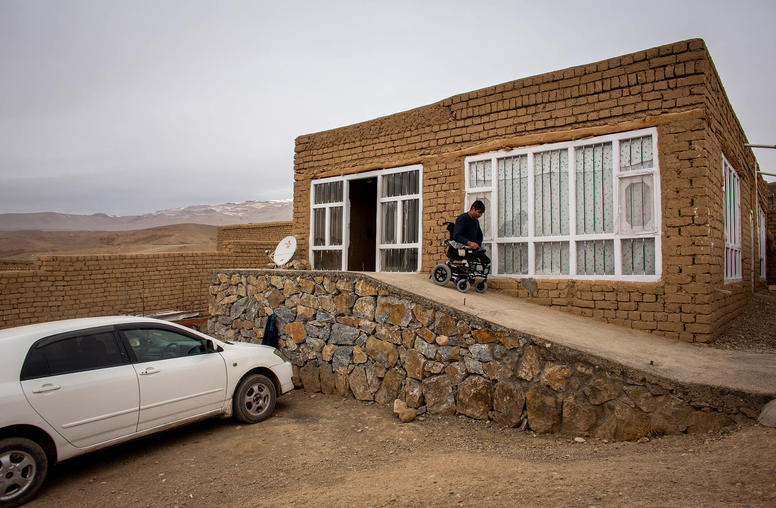As President Obama was outlining his plans to leave almost 10,000 American troops in Afghanistan next year to train and support the Afghan army and police, experts in a long-scheduled meeting at USIP were exploring a question that was directly related: how prepared is the Afghan National Police (ANP) to handle the non-military side of Afghanistan’s security equation?

One of the key goals of the post-2014 U.S. presence is to further develop Afghan security forces, including the 137,000-member ANP. The keynote speaker at the May 27 USIP event, former Afghan Interior Minister Ali Jalali, put the question in stark terms: “What will the Afghan police be—a rule of law organization to protect the population, or a force to protect the state?”
The continuing confusion over the role of the Afghan police—after 12 years of international efforts to train and equip them—results from several decisions made early in the reconstruction effort. First, the responsibilities for reforming Afghanistan’s security forces, which included the army and the police, were divided among five countries. Germany accepted the lead role for developing the police. But when the insurgency expanded in 2006, much of the responsibility for standing up new military and police forces was handed to the NATO Training Mission in Afghanistan (NTM-A).
Second, NTM-A’s initial focus was on generating the force—recruiting, training and equipping—rather than doctrinal coherence or institution-building.
“We built a security force, not a police force,” said Ambassador Catherine Royle, a British diplomat who recently completed her term as director of the International Police Coordination Board in Kabul. While most of the USIP panelists agreed that force generation was a necessary function performed well against difficult odds, they said it also postponed the harder decisions over how to create a rule-of-law force rather than a militarized counter-insurgency contingent.
Third, a failure by donor organizations and countries to coordinate effectively among their ranks impeded the development of a rational strategy. As Royle said, "The policy was 'adopt a province' or 'adopt a force.' " This led to what Jalali described as “an odd collection of forces—Border Police, Counter-Narcotics Police and so forth." France, for example, took on the Afghan National Civil Order Police (ANCOP) and developed a highly effective unit on the model of France’s gendarmerie. But ANCOP stood alone and was not coordinated with other efforts within the larger ANP.
“There is no such thing as the ANP,” Royle said. “It is a name. There’s no institutional ethos. You join ANCOP, or the Border Police.”
A fourth unfortunate pattern early in reconstruction was that Afghan views were frequently not heeded. Royle described how she adopted a policy of prohibiting international advisors from bringing written proposals to meetings with Afghan officials. This forced these advisors to actually listen to what Afghans wanted, rather than placing the Afghans in the position of just reacting to international proposals.
As a result, Royle said, the current vision for a future police force “is genuinely Afghan; Afghans knew what they wanted.” The focus on force generation, the incoherence of international donors and the pressure of an expanding insurgency in the mid-2000s meant that the key issue of reforming the ministries was never addressed. So now, corruption within those bureaucracies needs to be addressed through institutional reforms, including introducing merit-based hiring and program budgeting, Royle said.
'Complex' conversion for local police
Two other panelists, Jonathan Goodhand and Aziz Hakimi, provided a slightly different perspective as they introduced a recent USIP Special Report they wrote on the Afghan Local Police (ALP). The ALP was created by the NATO-led International Security Assistance Force (ISAF) from locally recruited forces, and they did not have the power to make arrests. But they were responsible for defending local communities against the insurgent threat.
In an effort to maintain control over ALP groups, the coalition agreed with the Afghan government that the forces would be bureaucratically incorporated into the Ministry of Interior line of command. This, Hakimi argued, “was a compromise solution between ISAF’s view of local security and President Karzai’s desire to control it.” Hakimi argued that the ALP often became co-opted by local leaders in the service of their own power struggles.
“To discuss civilianizing the police when so much has been spent para-militarizing it is complex,” Hakimi said.
Despite this candid assessment of the international community’s failures in police development, as articulated by a panel of experienced experts, most of them were upbeat about the capabilities of the ANP, noting that the police had come a long way. “I remain bullish on the ANP,” said Michelle Hughes, a former senior rule-of-law advisor to NTM-A who recently wrote a paper for USIP on police reform. “We have seen a number of capabilities grow exponentially.” Hughes noted the importance, however, of “building an institutional culture” in the ANP as well as linking governance programs to the development of the police force.
Beyond institutional reform, Jalali noted, “unless the ANP is integrated with other elements of security, governance and the rule of law, it cannot become an instrument of security.”
Questions on post-2014 U.S. presence
As the details of President Obama’s announcement on retaining 9,800 troops in Afghanistan after 2014 were reported, the panelists were asked whether this would be sufficient to achieve the complex agenda of training and reforming the ANP. Shawn Stith, an ISAF advisor recently embedded with the Ministry of Interior, replied that the number is sufficient to maintain a presence in Kabul, in the ministries and in several other regions of Afghanistan. Hughes noted that a reduction in the number of advisors had its positive points.
“Afghans are looking forward to us getting out of their way,” she said. Still, she added, international support will be needed to build the force.
Other panelists expressed concern over the lack of clarity on who would lead the effort to strengthen Afghanistan’s police after 2014. “I think the Ministry of Interior needs to do it,” Royle said, referring to deciding the sort of training that was required and securing the outside funding and training to provide it. “That’s what we do everywhere else. The IPCB can help set that up.”
The progress that the police force has made so far allowed the panelists to be optimistic about its future. That same progress was a key reason, according to Obama officials who briefed reporters, for ending the U.S. advise-and-support mission entirely by the end of 2016. Nonetheless, USIP’s panelists were very clear that there is a great deal that would need to be accomplished by Afghans in the next 2 1/2 years if the existing problems are to be resolved.
Scott Smith is USIP’s director of Afghanistan and Central Asia programs.



